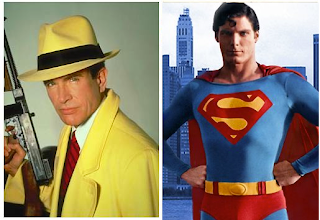S.W.O.T Analysis Revamped
Hello ladies and gents, this final week BP4 brings you our new and improved re-vamped S.W.O.T analysis plan for the official Birds of Prey movie:
• A female-dominated franchise, which is rare in today’s film industry • Appeals to a variety of audiences: females because the characters are empowering, males because the characters are attractive but also strong, and older generations because the film brings in some personalities from other stories to create nostalgia (Batman, Wonderwoman) • Birds of Prey is part of the DC comic family, a well known and successful comic book franchise • This is a known product/comic (the comic has over 127 issues) (DC Comics, n.d). and there are more books coming out this summer (DC Universe, n.d). | Weaknesses • It’s our first film so we lack the experience of established companies and filmmakers • Canadian-produced films don’t have the best reputation (but we will be using Hollywood stars and director) • “Chick flicks” don’t always have the best reputation for being girly and fluffy • Nostalgic aspect may not be enough to bring older viewers to the theatre. |
Opportunities • Cultural industries, including film, have brought in $56.8 billion to the economy in 2008. That’s an increase of 39 percentage points from 1999 (Culture and Leisure, 2009). This means the film industry is growing and contributing more and more to the economy. • Many other female empowerment films have seen great success. For example, Charlie’s Angels. • The superhero genre is in for the next few years (Coming Soon, n.d). in its revisionist stage, where the conventions are pre-established and the audience has certain expectation for the genre, but is still ready for surprises (Louis & Leach, 2001). | Threats• A lot of competitors are working on other films of the same genre • There are a lot of superhero releases coming out in summer 2012 • A lot of people are watching pirated movies online (this has led to 12,600 full-time jobs lost in the film economy and 4,900 directly related to the industry) (Film Theft, 2011). Furthermore, members of the Motion Picture Association or America say they lose $25-billion a year to illegal copiers (Lacey, 2011). |
Finally, since this is our last blog post we would like to thank anyone who has read our blogs, we hope you enjoyed it…and are getting ready for the biggest female-lead action film yet----coming to a theatre near you! JJ
References
Giannetti, Louis D. & Jim Leach. (2001). Understanding Movies-2nd Ed. Toronto, ON : Prentice Hall.
Lacey, L. (March 4, 2011). Piracy: The Downside of the Oscar Bounce. In The Globe and Mail. Retrieved March 20, 2011 from http://www.theglobeandmail.com/news/arts/movies/liam-lacey/piracy-the-downside-of-the-oscar-bounce/article1929106/
N.A. (n.d). Birds of Prey. In DC Universe. Retrieved March 20th, 2011 from http://www.dccomics.com/dcu/comics/?cm=18351
N.A (2009). Culture and Leisure. In Statistics Canada. Retrieved March 20th, 2011 from http://www41.statcan.gc.ca/2009/3955/cybac3955_000-eng.htm
N.A. (February 17, 2011). Film Theft. In Oxford Economics Report. Retrieved March 20, 2011 from http://www.cmpda.ca/press/IPSOS-OXFORD-ECONOMICS-Report_February-17-2011
N.A. (n.d). Birds of Prey. In DC Comics. Retrieved March 20th, 2011, from http://www.comicvine.com/birds-of-prey/49-6498/
N.A. (n.d). Coming Soon. In The-Numbers. Retrieved March 20th, 2011 from http://www.the-numbers.com/movies/release.php

















